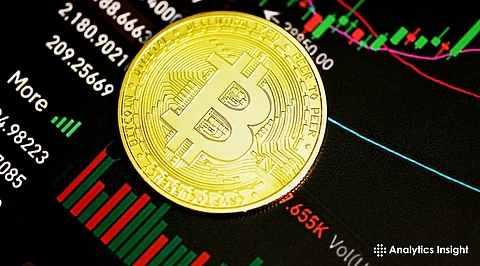

The price of Bitcoin goes up and down in ways that few comprehend, gaining one day and losing the next. The volatility is as enticing as it is disturbing, drawing new and veteran users alike. To truly understand its fluctuations, you must analyze market forces, emotional consensus, and technology. This book presents a path through the noise, distilling five key elements that create Bitcoin's mad price fluctuations and imparting lessons on how to surf its chaotic tides.
Bitcoin only has a limited supply, 21 million coins, period. Miners release new coins along the way, lowering their rewards every few years or so, such as occurred in 2024. If demand is high, e.g., because large investors are purchasing a lot of it, the price increases quickly because there isn't sufficient supply.
But when suppliers flood the market, prices crash. Adoption news like a firm now accepting Bitcoin payments tends to pump the demand, and regulatory crackdowns tend to chill it. Recognizing this push-and-pull reveals the basis of each price shock.
Emotion fuels Bitcoin’s rollercoaster more than most assets. Positive hype, imagine bright tweets from mainstream users or headlines regarding blockchain innovations, initiates buying sprees that push prices into the stratosphere.
Fear, uncertainty, or doubt (FUD), i.e., news of bans or hacks, induces panic selling that sends values tumbling. Social media propagates these waves and whispers of tsunamis. Tracking sentiment, from online chatter to news cycles, offers clues to the next swing, showing how psychology trumps logic in this digital realm.
Bitcoin doesn't exist in a vacuum, shocks in the world ripple through its market. Investors would take refuge in Bitcoin in 2025 because of inflation issues, and its price would rise. Or else, a stock market crash would see its price drop significantly as investors would sell their shares for money.
The large players, or ‘whales,’ set the price of Bitcoin. A large buy or sell, a thousand coins being exchanged, can make an impact. The exchanges monitor this through order books, where an unusually large amount of buy/sell orders indicate interest.
Bots fuel the mayhem, scalping minute price movements for profit, while leverage trading amplifies the difference, causing a spike in volatility. Monitoring wallet activity or exchange flows provides clues to these power moves. Small moves by whales tend to cause big waves for everyone.
Bitcoin's blockchain itself is provocative. Halvings, such as the one in 2024, reduce miner rewards, constricting supply and previously igniting bull runs. Improvements, e.g., more rapid transactions through Lightning Network, increase confidence in its future, pushing prices up.
But bugs, such as a sluggish network or security issue, rattle confidence and crash values. Hashrate, an indicator of mining power, shows system robustness; a decline could be a warning sign. Exploring these tech indicators reveals how Bitcoin's skeleton holds up or puts strain on its market skin.
Bitcoin's price fluctuations speak volumes about how scarce it is, emotions, external influences, big trades, and technological shifts. Supply and demand set the circumstances, emotions and news get people excited, world events push it along, big players steer it with forceful actions, and the network activity keeps it rolling. Looking beyond price, such as examining how many people use Bitcoin or technological advancements, provides a better insight.
This guide lays bare the gears grinding behind Bitcoin’s price gyrations.No one can predict the next big rise or fall, but knowing why it occurs: supply constraints, mood swings, global events, moves of the large players, and technological shifts, gives us a bit of understanding.
As 2025 progresses, with Bitcoin going up and down, these lessons direct us. Volatility is not a problem; it is the heartbeat of an untainted market. Understanding its rhythm can turn uncertainty into wisdom for those who do.
